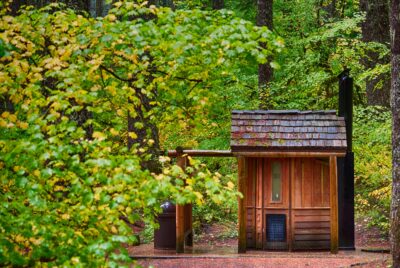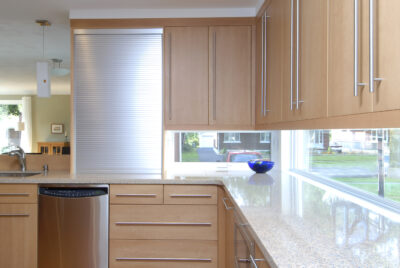Off-Grid Bathroom Design: Embracing Sustainability in Every Flush
Introduction: Embracing Off-Grid Living
Living off-grid is a lifestyle choice that embodies self-sufficiency, sustainability, and a connection to nature. When it comes to designing an off-grid home, every aspect requires careful consideration, including the bathroom. In this article, we’ll explore the fascinating world of off-grid bathroom design, from water-saving fixtures to eco-friendly materials, guiding you through the process of creating a functional and sustainable space. For more information on off-grid living, you can read: Off-Grid Living: A Comprehensive Overview
Understanding Off-Grid Living
Before diving into the specifics of off-grid bathroom design, let’s first understand what off-grid living entails. Living off-grid means being disconnected from public utilities such as water, electricity, and sewage systems. Instead, off-grid homes generate their own power, collect and treat their water, and manage waste on-site. It’s a lifestyle that prioritizes self-reliance, environmental stewardship, and resilience.
Challenges of Off-Grid Bathroom Design
Designing a bathroom for an off-grid home comes with its unique set of challenges. Unlike traditional homes connected to municipal water and sewage systems, off-grid bathrooms must be designed to minimize water usage, maximize energy efficiency, and manage waste effectively. Additionally, space constraints and remote locations may further complicate the design process.
Water-Saving Fixtures: Preserving Every Drop
In an off-grid bathroom, every drop of water counts. Therefore, choosing water-saving fixtures is paramount to conserving this precious resource. Low-flow toilets, aerated faucets, and water-efficient showerheads are essential components of an off-grid bathroom. These fixtures help reduce water consumption without compromising on performance, allowing you to maintain comfort while minimizing your environmental footprint. Some of the most popular low-flow toilets, aerated faucets and water efficient showerheads are as follows:
Most Popular Water-Saving Fixtures
Low-Flow Toilets:
- TOTO UltraMax II One-Piece Toilet: $250 – $500
- Kohler Highline Classic Comfort Height Toilet: $300 – $600
- American Standard H2Option Dual Flush Toilet: $250 – $400
Aerated Faucets:
- Delta Faucet Lahara Centerset Bathroom Faucet: $100 – $200
- Moen Eva Two-Handle Centerset Bathroom Faucet: $80 – $150
- Pfister Jaida Single Control Bathroom Faucet: $90 – $180
Water-Efficient Showerheads:
- High Sierra Classic Plus Showerhead: $40 – $80
- Delta Faucet 2-Spray H2Okinetic Shower Head: $50 – $100
- Niagara Earth Massage Handheld Showerhead: $15 – $30
Composting Toilets: Closing the Nutrient Loop
Composting toilets offer a sustainable solution for managing human waste in off-grid homes. Unlike conventional flush toilets that require water and sewage infrastructure, composting toilets decompose waste onsite, transforming it into nutrient-rich compost. These systems are odorless, hygienic, and environmentally friendly, making them ideal for off-grid living. With a composting toilet, you can close the nutrient loop and contribute to soil regeneration without relying on traditional sewage systems.
Deciding Between a Low-Flow Toilet and a Composting Toilet
Off-grid houses can use both low-flow toilets and composting toilets, depending on the preferences and needs of the homeowners. Low-flow toilets are a water-saving option that can help reduce water consumption in off-grid homes, making them suitable for areas where water conservation is a priority. On the other hand, composting toilets are an alternative waste management solution that does not require water for flushing. They are ideal for off-grid homes aiming for self-sufficiency and minimal environmental impact. Ultimately, the choice between low-flow toilets and composting toilets depends on factors such as water availability, waste management preferences, regulatory restrictions and overall sustainability goals.
Top 5 Composting Toilets:
Here are five popular composting toilet brands/models along with their approximate budget costs (Prices may vary depending on the retailer, location, and additional features or accessories included with the composting toilet):
- Nature’s Head Self-Contained Composting Toilet: Priced around $900 to $1,000 USD.
- Separett Villa 9215: Costs approximately $1,200 to $1,500 USD.
- Sun-Mar Excel Self-Contained Composting Toilet: Ranges from $1,500 to $2,000 USD.
- Boxio toilet kit: Typically priced between $300-$400 USD.
- Air Head Composting Toilet: Costs approximately $1,000 to $1,200 USD.
Alternative Water Sources: Tapping into Nature’s Bounty
Off-grid homes often rely on alternative water sources such as rainwater harvesting and well water. Incorporating these sources into your bathroom design requires careful planning and filtration systems to ensure water quality and safety. Rainwater collection systems can be integrated into the roof design, while well water may require pumping and treatment before use. By harnessing nature’s bounty, off-grid homeowners can reduce their reliance on conventional water sources.
Greywater Recycling: Giving Water a Second Life
Greywater recycling systems allow off-grid homeowners to reuse water from sinks, showers, and washing machines for irrigation and other non-potable purposes. By diverting greywater away from the sewage system and into storage tanks or treatment systems, you can reduce water consumption and minimize environmental impact. Greywater can be filtered and treated to remove impurities before being reused, providing a sustainable water source for landscaping and garden irrigation.
Energy-Efficient Lighting: Illuminating the Way
Lighting plays a crucial role in off-grid bathroom design, providing both functionality and ambiance. Opt for energy-efficient LED bulbs that consume less power while delivering bright, natural light. When buying LED bulbs, watch for the kelvin temperature. 2300-3000K is warm light, yellow/orange tones while 4000-5000 is a cooler light rendition – more in the blue/green tones. Our skin looks better in 2700-3000k. Consider installing skylights or solar skylight tubes to maximize natural daylighting and reduce the need for artificial lighting during the day. Solar powered exterior lighting is a must, especially when the days get shorter. By prioritizing energy-efficient lighting solutions, you can minimize electricity usage and enhance the sustainability of your off-grid bathroom.
Natural and Recycled Materials: Eco-Friendly Finishes
When it comes to finishes and materials for your off-grid bathroom, opt for natural and recycled options whenever possible. Sustainable materials such as bamboo, reclaimed wood, and recycled glass not only reduce environmental impact but also add warmth and character to your space. Look for non-toxic, VOC-free paints and finishes to improve indoor air quality and create a healthy living environment. By choosing eco-friendly materials, you can minimize your ecological footprint while enjoying a beautiful and sustainable off-grid bathroom.
Off-Grid Bathroom Design Tips: Practical Advice for Success
Designing an off-grid bathroom requires careful planning and attention to detail. Here are some practical tips to help you create a functional and sustainable space:
- Prioritize water conservation by choosing low-flow fixtures and implementing greywater recycling systems.
- Invest in energy-efficient lighting and appliances to minimize electricity usage and maximize sustainability.
- Incorporate natural and recycled materials into your bathroom design to reduce environmental impact and enhance aesthetics.
- Consider alternative waste management solutions such as composting toilets to minimize reliance on conventional sewage systems.
- Plan for off-grid living needs, including water storage, filtration, and energy generation, to ensure self-sufficiency and resilience.
- If you have a very small space, use the room as a shower instead of dedicating a separate shower stall. Install a drain in the center of the floor; waterproof and tile the entire space; If the bathroom is small, build a lip at the entry in order to contain the water on the floor. install the hand shower on the wall where you can maximize the spray on your body. Once you are done showering, wipe down the fixtures.
Conclusion: Designing for Sustainable Living
In conclusion, off-grid bathroom design offers a unique opportunity to embrace sustainability and self-sufficiency in every aspect of home life. By incorporating water-saving fixtures, alternative water sources, energy-efficient lighting, composting toilets, and eco-friendly materials, off-grid homeowners can create bathrooms that are both functional and environmentally responsible. Whether you’re building a new off-grid home or retrofitting an existing property, thoughtful design choices can make a significant difference in reducing your ecological footprint and embracing a more sustainable way of living.
FAQs about Off-Grid Bathroom Design
What is off-grid bathroom design?
Off-grid bathroom design involves creating a bathroom space that operates independently of public utilities such as water and sewage systems. It typically includes features and systems that allow for self-sufficiency, such as water-saving fixtures, alternative water sources, composting toilets, and eco-friendly materials.
How can I conserve water in an off-grid bathroom?
There are several ways to conserve water in an off-grid bathroom, including: Installing low-flow fixtures such as toilets, faucets, and showerheads.
- Implementing greywater recycling systems to reuse water from sinks, showers, and washing machines for non-potable purposes like irrigation.
- Using alternative water sources such as rainwater harvesting or well water.
- Being mindful of water usage habits, such as turning off the tap while brushing teeth or taking shorter showers.
- Repairing any leaks promptly to prevent water wastage.
What are the benefits of composting toilets in off-grid homes?
Composting toilets offer several benefits for off-grid homes, including:
- Water conservation: Composting toilets do not require water for flushing, reducing overall water consumption.
- Waste management: They break down human waste into nutrient-rich compost, eliminating the need for conventional sewage systems.
- Environmental sustainability: Composting toilets help close the nutrient loop by converting waste into a valuable resource for soil regeneration.
- Odor control: Modern composting toilets are designed to be odorless and hygienic, providing a pleasant bathroom experience.
- Independence: Composting toilets allow off-grid homeowners to be self-sufficient in managing their waste without relying on external infrastructure.
Are there any alternative water sources for off-grid bathrooms?
Yes, there are several alternative water sources that off-grid bathrooms can utilize, including:
- Rainwater harvesting: Collecting rainwater from the roof and storing it in tanks for use in flushing toilets, watering plants, and other non-potable purposes.
- Well water: Tapping into groundwater through a well and using it for bathing, cleaning, and other household tasks.
- Spring water: Accessing natural springs on the property for a clean and reliable water source.
- Surface water: Utilizing water from streams, rivers, or lakes, if available, after proper filtration and treatment.
How can I incorporate sustainable materials into my off-grid bathroom design?
To incorporate sustainable materials into your off-grid bathroom design, consider the following options:
- Bamboo: Use bamboo for flooring, countertops, or wall coverings due to its rapid renewal and durability.
- Reclaimed wood: Choose reclaimed wood for vanities, cabinets, or accents to reduce deforestation and add rustic charm.
- Recycled glass: Opt for tiles or countertops made from recycled glass to minimize waste and add a unique touch to your bathroom.
- VOC-free paints and finishes: Select paints and finishes that are low in volatile organic compounds (VOCs) to improve indoor air quality and reduce environmental impact.
- Salvaged materials: Incorporate salvaged materials such as vintage fixtures, doors, or hardware to add character and reduce the need for new resources.




